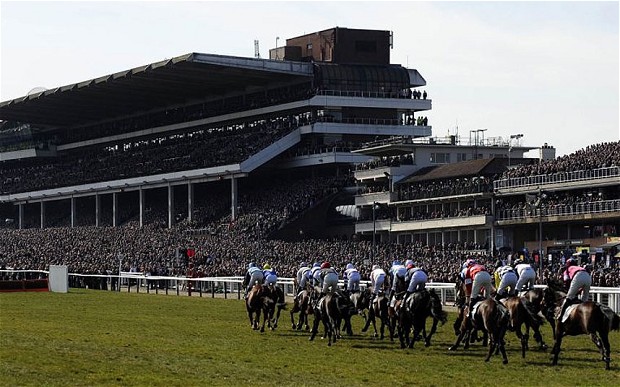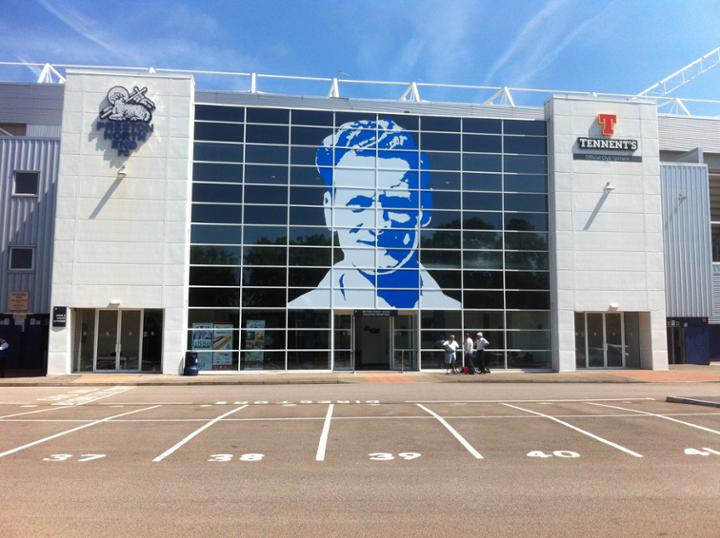Britain truly is the home of organised sport, and her sporting influence is felt across the globe. Whether you’re a South American footballer, a North American golfer, an Indian cricketer, an Australasian Rugby star, or a Chinese snooker player, you owe it all to the sporting heritage of the UK.
This article aims to tap into the lucrative market of British sporting tourism. The ten featured cities range from the metropolis of London, to smaller destinations such as Preston and St. Andrews.
London
 London is easily the UK’s largest city, so it not surprising that some of the nation’s most famous sporting venues are found here. The north London skyline is dominated by the newly refurbished Wembley Stadium, which plays host to international matches, and domestic cup finals, such as the F.A. Cup. In addition to the national arena, there are also a dozen league clubs to be found in and around London.
London is easily the UK’s largest city, so it not surprising that some of the nation’s most famous sporting venues are found here. The north London skyline is dominated by the newly refurbished Wembley Stadium, which plays host to international matches, and domestic cup finals, such as the F.A. Cup. In addition to the national arena, there are also a dozen league clubs to be found in and around London.
The English Rugby Union side also play their home games in North London, at the majestic Twickenham Stadium, with its 80,000 capacity. Tennis enthusiasts flock to the lawns of Wimbledon for a fortnight each summer, to view the oldest Grand Slam tournament.
Whilst the spiritual home of World Cricket is also to found in London, at Lord’s Cricket Ground. Finally, from 2012 onwards the sporting tourist will have the chance to visit the Olympic Stadium in the East End of the capital.
Cheltenham
 Whereas Aintree in Lancashire claims the Grand National, the town of Cheltenham holds the three-day racing festival that offers the tourist the best atmosphere of any Horse Racing event in the world.
Whereas Aintree in Lancashire claims the Grand National, the town of Cheltenham holds the three-day racing festival that offers the tourist the best atmosphere of any Horse Racing event in the world.
This is due in part to the pleasant Cotswold Hills that overlook the Race Course, and the high standard of equestrianism, but above all the wave of Irish punters who flock annually to this elegant corner of England.
Every March the usually sleepy town is transformed into a home from home for thousands of Irish racing enthusiasts, even when there isn’t an Irish trained winner, the Guinness is sure to flow long into the night.
Cardiff
 Rugby Union was invented in an English Public School almost two hundred years ago, but the spiritual home of British rugby is undoubtedly in South Wales. There are many proud ‘Rugger’ towns in the vicinity, but Cardiff is the site of the Millennium Stadium, with its retractable roof.
Rugby Union was invented in an English Public School almost two hundred years ago, but the spiritual home of British rugby is undoubtedly in South Wales. There are many proud ‘Rugger’ towns in the vicinity, but Cardiff is the site of the Millennium Stadium, with its retractable roof.
Built as a replacement for Cardiff Arms Park, the most hallowed of twentieth century rugby grounds, the Millennium Stadium represents not only the pastime of Wales, but also the regeneration of the Welsh capital.
The Millennium Stadium also hosted the English F.A. Cup between 2001 and 2007, during the renovation of Wembley Stadium.
Nottingham
 The East Midlands city of Nottingham is the smallest English city with two football teams, Notts. County and Nottingham Forest, the latter having twice won the European Cup. The riverside stadium of Trent Bridge is a scenic venue for Test Match cricket.
The East Midlands city of Nottingham is the smallest English city with two football teams, Notts. County and Nottingham Forest, the latter having twice won the European Cup. The riverside stadium of Trent Bridge is a scenic venue for Test Match cricket.
In addition, the National Water Sports Centre is one of the most impressive leisure facilities in Britain. The fast-flowing artificially created rapids challenge Britain’s elite canoeists, kayakers, and white water rafters.
Whilst the two kilometre long Regatta Lake caters for the needs of Britain’s hugely successful Olympic rowing team.
Sheffield
 Both Sheffield football teams, Wednesday and United have been crowned English champions, but perhaps the hilly Yorkshire city’s most famous sporting association is with snooker.
Both Sheffield football teams, Wednesday and United have been crowned English champions, but perhaps the hilly Yorkshire city’s most famous sporting association is with snooker.
The Snooker World Championship is held every spring in Sheffield, in what is literally the most dramatic setting for any high profile sporting event, the Crucible Theatre.
Leeds
 Yorkshire is perhaps the proudest of all English cricketing counties, and there are few venues in the world that can match Headingly for nostalgia, and passionate support. Cricket is a way of life in Yorkshire, and until very recently only those born within the Four Ridings of Yorkshire could qualify for the county team.
Yorkshire is perhaps the proudest of all English cricketing counties, and there are few venues in the world that can match Headingly for nostalgia, and passionate support. Cricket is a way of life in Yorkshire, and until very recently only those born within the Four Ridings of Yorkshire could qualify for the county team.
The cricketing ground is next door to the home of Leeds Rhinos Rugby League Club, who have enjoyed recent successes that Leeds Football Club can only dream of.
However, despite its tenants falling on hard times, the footballing stadium of Elland Road still makes an impact on the visitor.
Manchester
 There’s more to Manchester than Old Trafford, though the home of Man. United does attract fans from around the World. Local rivals Manchester City also boast an impressive stadium, which was originally constructed for the Commonwealth Games of 2002.
There’s more to Manchester than Old Trafford, though the home of Man. United does attract fans from around the World. Local rivals Manchester City also boast an impressive stadium, which was originally constructed for the Commonwealth Games of 2002.
In addition to the two large stadia that between them can hold 125,000 spectators, the city also hosts the Manchester Velodrome, one of the World’s premier cycling venues.
For fans of the oval ball, the rugby league towns of Salford, Wigan, and St. Helens are a just a short hop away.
Preston
 The small Lancashire city of Preston has one major claim to fame, namely being the Mecca of world club football. Preston’s unparalleled footballing heritage, centres around the recently refurbished Deepdale stadium, home of the famous Preston North End Football Club.
The small Lancashire city of Preston has one major claim to fame, namely being the Mecca of world club football. Preston’s unparalleled footballing heritage, centres around the recently refurbished Deepdale stadium, home of the famous Preston North End Football Club.
Deepdale is the oldest professional football ground anywhere on Earth (football was first played here in 1880), and consequently the English F.A. chose as the site for the National History Museum, a must-see for football fanatics of any allegiance.
The Museum has an extensive collection of artefacts from the nineteenth century to the present day. There are also many interactive amusements for children, and the opportunity to view the hallowed turf of Deepdale itself.
Preston has excellent transport links due to it’s proximity to the M6, and the West Coast railway that connects the Midlands to Scotland.
Glasgow
 Glasgow, not Edinburgh, is the footballing capital of Scotland, as testified by the majestic sight of Hampden Park. Hampden is the headquarters of the SFA, the second oldest football association in the World, and it also holds the Scottish Football Museum.
Glasgow, not Edinburgh, is the footballing capital of Scotland, as testified by the majestic sight of Hampden Park. Hampden is the headquarters of the SFA, the second oldest football association in the World, and it also holds the Scottish Football Museum.
The rivalry between the two main Glaswegian teams, Celtic and Rangers is perhaps the fiercest in Europe. Rangers have won the Scottish League more times, but Celtic was the first British team to lift the European Cup back in 1967.
Both grounds are worth a visit; Celtic Park (Parkhead to traditionalists) is the bigger of the two, and holds over 60,000 supporters, however it lacks the red-bricked elegance of Rangers’ Ibrox Stadium.
In fact, Glasgow is the only European city that can claim three football venues with a capacity of over 50,000. However in the summer of 2014, football will for once take a back seat, as Glasgow hosts the Commonwealth Games.
St. Andrews
 Scotland’s association with golf goes back many centuries, in fact it is said that Mary Queen of Scots enjoyed the game. Though the Fife town has a population of little more than 15,000, it is home to the world’s most famous golf club, the Royal and Ancient (founded in 1754), plus a dozen pristine golf courses in the vicinity of this historical university town.
Scotland’s association with golf goes back many centuries, in fact it is said that Mary Queen of Scots enjoyed the game. Though the Fife town has a population of little more than 15,000, it is home to the world’s most famous golf club, the Royal and Ancient (founded in 1754), plus a dozen pristine golf courses in the vicinity of this historical university town.
The advantage of a trip to this seaside location, is that any party members who are not interested in golf, can enjoy the beach, or the rustic charm of St. Andrew’s many old buildings.
Written by Brian Heller
Like O-Posts on Facebook
You can also follow O-Posts on Twitter @OPosts

